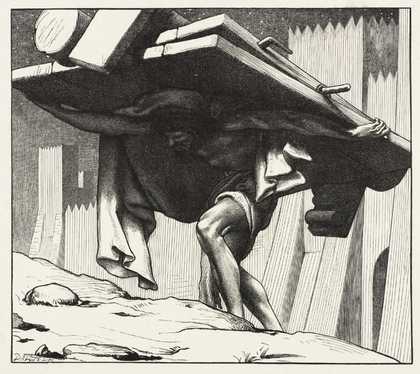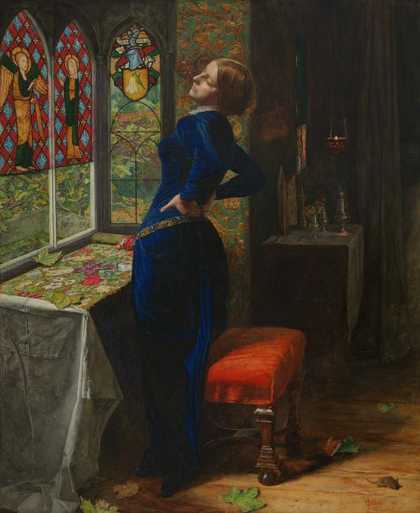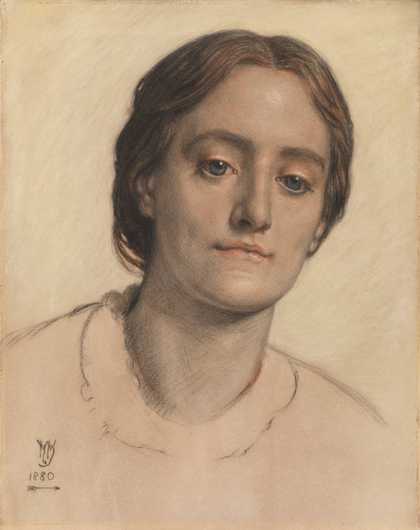
Frederic, Lord Leighton
Samson Carrying the Gate (published 1881)
Tate
This exhibition presented a selection of drawings, burnished proofs and woodblocks for the Book Illustration of The Sixties, from the exceptionally comprehensive collection of Mr. Harold Hartley.
The movement generally known as the Book Illustration of the Sixties (1855-1875) may be taken as extending, roughly, from Moxon’s publication, in 1857, of Poems by Alfred Tennyson with five designs by Rossetti, eighteen by Millais and seven by Holman Hunt as well as others by Mulready, Creswick, Horsley, Stanfiled, Maclise, Willmott and Madox Brown.
Several contributory causes helped the movement. The large circulation of the illustrated serial magazines, which became popular during the sixties, as compared with books, enabled the publishers to pay prices large enough to attract the greatest artists of the time (Rossetti and Millais obtained £30 and more for quite small drawings).
For a few years there was the happy conjunction of great artists, skilled engravers as interpreters, and a large public with some appreciation of poetry and romance.
Gradually the development of photography with its economy, quickness and perfect facsimile of the artist’s design, undermined the general use of the craft of the engraved.





